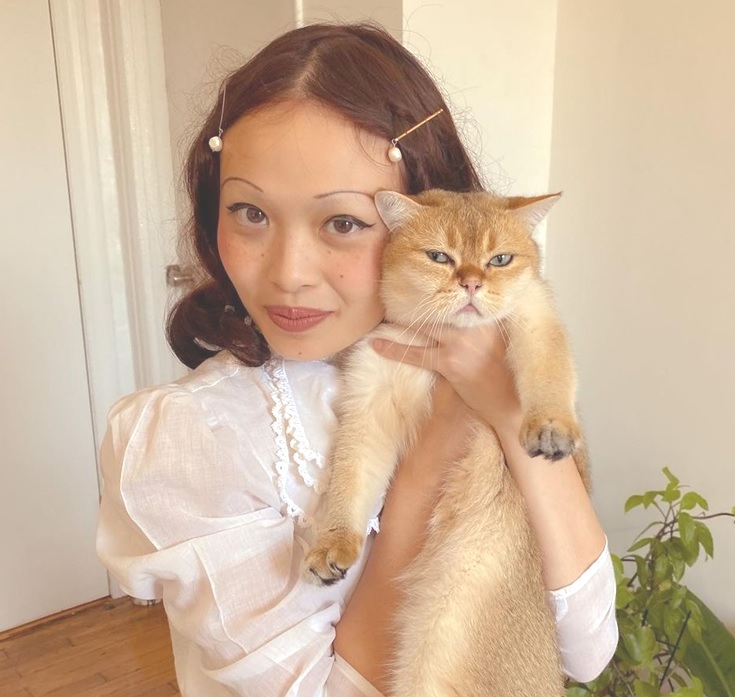
Nowadays, it feels like in order to be an influencer; one must partake in fast fashion. With pressure to perform and be aspirational, influencers have created this unreasonable trend cycle for themselves. From thrift hauls to fast fashion brand promotions, micro-trends are taking over the fashion industry. With apps like Tik Tok, people are told by fashion accounts that their recently purchased clothing is no longer in style, and they must, once again, update their wardrobe. Bianca Borissova, the writer for Screenshot, dubs this phenomenon a “micro-trend crisis.” The competitive nature of the influencer lifestyle when paired with this accelerated trend cycle is a recipe for disaster.
The notion that relevance and popularity are tied to clothing is not new. The desire to be seen in the newest, hottest fashion trend has become part of the human condition for many, unfortunately. Since the Industrial Revolution, there has been an upward trajectory of people buying cheaper clothes to follow shorter trend cycles. This consumer attitude was incredibly popular by the 1960s, and influencers are simply escalating this cycle.
This mission to create and then trash trends every couple of months is woefully unstainable. The waste and harmful labour behind this type of consumerism are shocking. As Rachael Dottle and Jackie Gu point out in their Bloomberg article on fast fashion, “fashion [as an industry] accounts for up to 10% of global carbon dioxide output”. Moreover, as Wu Peiyue in their investigative piece for Sixth Tone, the popular fast-fashion brand Shein “failed to make public disclosures about [labour] conditions in its supply chain…[and] the latest Fashion Transparency Index report, compiled by the non-profit Fashion Revolution, gave Shein a total score of 1 out of 100.”
Sustainable clothing is not always affordable or size-inclusive. This is not a critique of the average person in need of new pair of jeans, who decides to shop H&M over Everlane. Instead, it is to call out this culture of extreme over-consumption perpetuated by the influencer lifestyle. To counteract this micro-trend crisis behold, the slow-influencer…
Granted, definitions of slow influencers remain undecided as the term itself is relatively new; some argue that slow-influencers are hypocritical as they both criticize and promote consumption. The slow influencer represents a counter-culture that seeks to offer alternate solutions while hosting a necessary discussion about the dangers of fast fashion. Simply put, slow influencers intersect fashion, sustainability, and critical thinking in a meaningful way.
Below is a list of slow influencers you should follow.
Aja Barber (She/Her/They)
As described on their website, Aja Barber is “a writer, stylist and consultant whose work deals with the intersections of sustainability and the fashion landscape.” Barber’s latest work includes their book, Consumed: The Need for Collective Change, Climate Change & Consumerism. Barber explores the relationship between racism and wealth inequality and how this impacts consumer choices. They confront the reader, forcing us to take a look at our consumer habits.
Barber is one of the first creators to call out wealthy individuals using fast fashion. “Fast fashion isn’t a problem because “the poor” bought it. It is a problem because people with disposable [sic] income buy five dresses at a time and wear them once or twice”, they tweeted back in 2020. They go on to say that “fast fashion is largely upheld by the middle and upper class” — an important aspect of fast fashion Barber explores in Consumed.
Through sustainability, fashion, and social justice, Barber demonstrates how changing how you think about capitalism and consumerism can empower you.
Mina Le (She/Her)
Based in Brooklyn, New York, Mina Le is a creator on Youtube who provides video essays on topics like “fashion history, costume, cultural, and film analyses.” Le’s video “tiktok is kind of bad for fashion” explains how the app’s algorithm requires creators to post almost every day, and influencers feel they must have an equally competitive wardrobe. Le notes that these expectations plus the escalated rate of the trend cycle are only feasible through fast fashion.
Le’s video reiterates Barber’s work when it comes to classism and blaming low-income individuals. Le’s videos also explore fashion in film and television.
The Sustainable Fashion Guru (She/Her)
Although her handle is pretty self-explanatory, Sofia is an educator and fashion activist with a primary focus on sustainability. In one of her more popular videos on Youtube, “Dear Fashion Influencers… Please Stop,” she addresses financially privileged, white, and thin influencers, asking them to change their consumption habits when it comes to clothes.
As Sofia puts it, these people with social power have the opportunity to “stop promoting fast fashion,” changing the influencer landscape for the better. Sofia points out that in using fast fashion to promote your platform, influencers advertise fast fashion as something admirable, not harmful.
Sofia also covers other topics like racism in fashion, sustainable clothing, finding sustainable clothing, and fashion in the age of COVID-19.
As these influencers point out, it is not the small creator making their livelihood off of promotions or individuals without disposable incomes to spend on clothing that is at fault for this trend cycle and harmful reliance on fast fashion. Rather, the point of this line of thought is to shed a light on influencers with more prominent platforms and financial stability that need to be more conscious.
Buying large amounts of clothing from stores with cheap labour only to declare them unfashionable months later is a dangerous cycle. It is harmful to consumers, workers and to the planet. Influencers hold significant power, which must be exercised with more responsibility. And, ultimately, the true onus is on the large, faceless corporations that are encouraging this trend cycle and investing in outsourced cheap labour for poorly made clothes so that consumers continue to buy.





